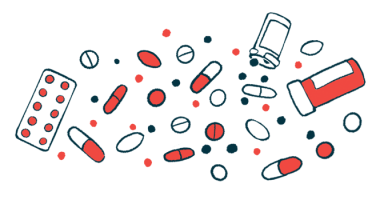BAFF Protein Levels May Help Predict Remission After Rituximab

Measuring the blood levels of a protein called BAFF could help predict the chances of remission after induction treatment with rituximab in people with ANCA vasculitis (AAV), according to a new study.
Determining the BAFF levels in the blood also could guide further care for AAV patients, the researchers noted.
“The [blood] BAFF level at 6 months after rituximab treatment was significantly higher in the remission group than in the non-achieved group,” the researchers wrote, adding that additional measures, including a possible second dose of rituximab, “should be considered” for patients not achieving remission.
The study, “Serum B cell activating factor (BAFF) as a biomarker for induction of remission with rituximab in ANCA-associated vasculitis,” was published in the journal Immunological Medicine.
AAV is an autoimmune disease driven by self-targeting antibodies that bind to certain immune cells, overactivating them. Rituximab, sold as Rituxan in the U.S. and MabThera in the EU, is a medication that works by depleting B-cells — immune cells responsible for making antibodies.
It is commonly used as an induction treatment in the management of AAV.
BAFF, or B-cell activating factor, is a signaling protein that — as its name implies — is involved in regulating the activation of B-cells. A previous study in people with a different antibody-mediated autoimmune disease, called anti-MAG polyneuropathy, indicated that patients on rituximab who achieved remission tended to experience an increase in BAFF levels shortly after treatment.
Now, scientists in Japan conducted an analysis of AAV patients at their institution to see whether BAFF might also be helpful for predicting remission in ANCA vasculitis. The analysis included 27 patients in total, though not all had available data at every time point assessed.
Patients were divided into a remission group and a “non-achieving group,” according to scores on the Birmingham Vasculitis Activity Score (BVAS). A BVAS score of zero indicated remission, and anything higher was classified as non-achieving. Remission and non-achieving groups were broadly comparable in terms of age, sex, AAV type and duration, B-cell counts, and treatment patterns.
Prior to treatment with rituximab, the average BAFF levels were similar in both groups, based on data from 18 total patients. Among them, 13 were in remission and five were non-achieving.
At one month after rituximab treatment, BAFF levels were generally higher in the five patients who were in remission compared with two non-achieving patients, but the difference was not statistically significant.
At six months after rituximab, however, mean BAFF levels were significantly higher in 13 patients in the remission group compared with five in the non-achieving group (2,642 vs. 948 picograms per milliliter, pg/mL). Researchers noted that, while BAFF levels generally remained within a normal range for patients in the non-achieving group, those in remission tended to see an increase following treatment.
The team speculated that the increase in BAFF levels might be due to compensatory mechanisms from reduced B-cell counts — in other words, when rituximab effectively wipes out B-cells, BAFF levels start to increase as the body tries to compensate for the change.
“If serum BAFF does not increase after 6 months of [rituximab] in AAV, it may be assumed that there are residual B cells in the tissues,” the researchers wrote. “Enhanced treatment targeting B cells, including re-administration of rituximab or the addition of other immunosuppressive drugs, should be considered.”







